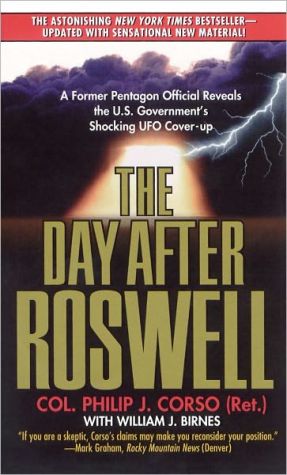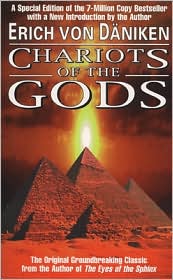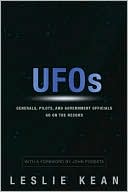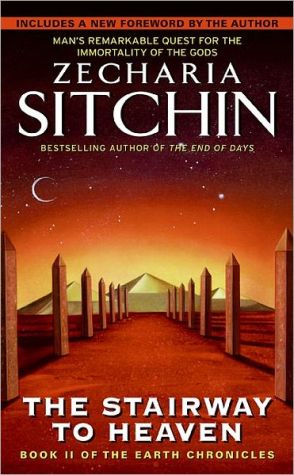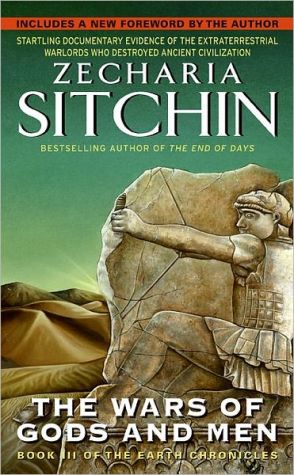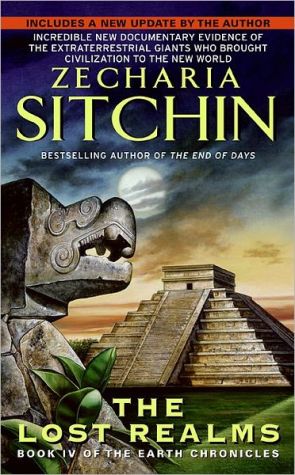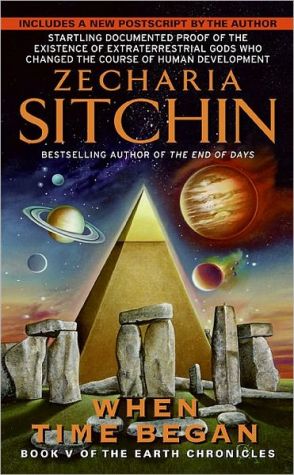Day After Roswell
A landmark expose firmly grounded in fact, The Day After Roswell ends the decades-old controversy surrounding the mysterious crash of an unidentified aircraft at Roswell, New Mexico, in 1947. Backed by documents newly declassified through the Freedom of Information Act, Colonel Philip J. Corso (Ret.), a member of President Eisenhower's National Security Council and former head of the Foreign Technology Desk at the U.S. Army's Research & Development department, has come forward to reveal...
Search in google:
A landmark exposé firmly grounded in fact, The Day After Roswell ends the decades-old controversy surrounding the mysterious crash of an unidentified aircraft at Roswell, New Mexico, in 1947. Backed by documents newly declassified through the Freedom of Information Act, Colonel Philip J. Corso (Ret. Publishers Weekly Never mind a crashed saucer with dead aliens strewn around it. Corso has bigger news to impart: that alien technology harvested from the infamous saucer crash in Roswell, N.Mex., in July 1947 led directly to the development of the integrated circuit chip, and laser and fiber optic technologies, among other marvelsand that he knows this because he was in charge of distributing the harvest. Senator Strom Thurmond offers a foreword that will reassure readers that Corso is in fact a real person, and a patriot. Curiously, Corso first learned of the Roswell incident when, on July 6, 1947, he saw one of the alien bodies, which was en route to Air Materiel Command in Ohio. Fourteen years later, as the newly appointed head of the Foreign Technology Desk in Army R&D at the Pentagon, he "inherited" a file cabinet filled with Roswell debris. He details the "program" by which the debris and/or its technologies were released to defense contractors (and ascribes the invention of the transistor to discussions among Wernher von Braun, Bell Lab technicians and others regarding "silicon wafers from the Roswell crash"); he also explores the government's cover-up of the UFO phenomenon. Despite flashes of paranoia (e.g., of a KGB-manipulated "secret government within the [U.S.] government"), in general Corso comes off as calm, sober and rational. His claims are so outlandish, though, that the many readers he's going to attract likely will have difficulty discerning whether they are reading a hoax, ravings or the biggest story of the century. (July)
Excerpt from Chapter 1\ On the evening of July 4, 1947 (though the dates may differ depending on who is telling the story), while the rest of the country was celebrating Independence Day and looking with great optimism at the costly peace that the sacrifice of its soldiers had brought, radar operators at sites around Roswell noticed that the strange objects were turning up again and looked almost as if they were changing their shapes on the screen. They were pulsating — it was the only way you could describe it — glowing more intensely and then dimly as tremendous thunder storms broke out over the desert. Steve Arnold, posted to the Roswell airfield control tower that evening, had never seen a blip behave like that as it darted across the screen between sweeps at speeds over a thousand miles an hour. All the while it was pulsating, throbbing almost, until, while the skies over the base exploded in a biblical display of thunder and lightning, it arced to the lower left-hand quadrant of the screen, seemed to disappear for a moment, then exploded in a brilliant white fluorescence and evaporated right before his very eyes.\ The screen was clear. The blips were gone. And as controllers looked around at each other and at the CIC officers in the room, the same thought arose in all their minds: An object, whatever it was, had crashed. The military response was put into motion within seconds: This was a national security issue — jump on that thing in the desert and bring it back before anyone else could find it.\ Even before the radar officer called the 509th base commander, Col. William Blanchard, reporting that radar indicated the crash of an unidentified aircraft to the north and west of Roswell, the CIC dispatch team had already mobilized to deploy an immediate response crash-and-retrieval team to locate and secure the crash site. They believed this was an enemy aircraft that had slipped through our radar defense system either from South America or over the Canadian border and had taken photos of top secret military installations. They also wanted to keep civilians away just in case, they said, there was any radiation from the craft's propulsion system, which allowed it to make hairpin turns at three thousand miles an hour. Nobody knew how this thing was powered, and nobody knew whether any personnel had ejected from the aircraft and were wandering around the desert. "Bull" Blanchard green-lighted the retrieval mission to get out there as soon as possible, taking with them all the night-patrol equipment they could scare up, all the two-and-a-half-ton trucks that they could roll, and the base's "low-boy" flatbed wreckers to bring the aircraft back. If it was a crash, they wanted to get it under wraps in a hangar before any civilian authorities could get their hands on it and blab to the newspapers.\ But the air controllers at the 509th weren't the only ones who thought they saw an aircraft go down. On the outskirts of the city, ranchers, families camping in the desert, and residents saw an aircraft that exploded in a bright light in between flashes of lightning and plummeted to earth in the direction of Corona, the neighboring town to the north of Roswell. Chavez County sheriff George Wilcox started receiving calls in his office shortly after midnight on the morning of the fifth that an airplane had crashed out in the desert, and he notified the Roswell Fire Department that he would dispatch them as soon as he had an approximate location. No sense pulling fire apparatus out of the station house to chase something through the desert unless they knew where it was. Besides, Wilcox didn't like rolling the trucks out of town just in case there was a fire in the city that needed all the apparatus they could throw at it, especially the pumpers.\ However finding the crash site didn't take long. A group of Indian artifact hunters camping in the scrub brush north of Roswell had also seen the pulsating light overhead, heard a burning hiss and the strange, ground-shaking "thunk" of a crash nearby in the distance, and followed the sound to a group of low hills just over a rise. Before they even inspected the smoking wreckage, they radioed the crash-site location into Sheriff Wilcox's office, which dispatched the fire department to a spot about thirty-seven miles north and west of the city.\ "I'm already on my way," he told the radio operator at the firehouse, who also called the city police for an escort.\ And by about four-thirty that morning, a single pumper and police car were bouncing through the desert taking Pine Lodge Road west to where Sheriff Wilcox had directed them. Neither the sheriff nor the fire department knew that a military retrieval team was also on its way to the site with orders to secure the location and, by any means necessary, prevent the unauthorized dissemination of any information about the crash.\ It was still dark when, from another direction, Steve Arnold, riding shotgun in one of the staff cars in the convoy of recovery vehicles from the 509th, reached the crash site first. Even before their trucks rolled into position, an MP lieutenant from the first jeep posted a picket of sentries, and an engineer ordered his unit to string a series of floodlights around the area. Then Arnold's car pulled up, and he got his own first glimpse of the wreckage. But it wasn't really wreckage at all — not in the way he'd seen plane crashes during the war. From what he could make out through the purple darkness, the dark-skinned craft seemed mostly intact and had lost no large pieces. Sure, there were bits and pieces of debris all over the area, but the aircraft itself hadn't broken apart on impact the way a normal airplane would. And the whole scene was still shrouded in darkness.\ Then, the staff cars and jeeps that had accompanied the trucks lined up head-on to the crash and threw their headlights against the arroyo to supplement the floodlights that were still being strung by the engineers. In the sudden intersecting beams of headlights, Arnold could see that, indeed, the soft-cornered delta-shaped eggshell type of craft was essentially in one piece, even though it had embedded its nose hard into the embankment of the arroyo with its tail high in the air. Heat was still rising off the debris even though, according to the base radar at the 509th, the crash probably took place before midnight on the 4th. Then Arnold heard the brief sizzle of a battery charging up and the hum of a gasoline generator. That's when the string of lights came up, and the whole site suddenly looked like a baseball field before a big night game.\ In the stark light of the military searchlights, Arnold saw the entire landscape of the crash. He thought it looked more like a crash landing because the craft was intact except for a split seam running lengthwise along the side and the steep forty-five-plus-degree angle of the craft's incline. He assumed it was a craft, even though it was like no airplane he'd ever seen. It was small, but it looked more like the flying wing shape of an old Curtis than an ellipse or a saucer. And it had two tail fins on the top sides of the delta's feet that pointed up and out. He angled himself as close to the split seam of the craft as he could get without stepping in front of the workers in hazardous material suits who were checking the site for radiation, and that was when he saw them in the shadow. Little dark gray figures — maybe four, four and a half feet in length — sprawled across the ground.\ "Are those people?" Arnold heard someone say as medics rushed up with stretchers to the knife-like laceration along the side of the craft through which the bodies had either crawled or tumbled.\ Arnold looked around the perimeter of light and saw another figure, motionless but menacing nevertheless, and another leaning against a small rise in the desert sand. There was a fifth figure near the opening of the craft. As radiation technicians gave the all-clear and medics ran to the bodies with stretchers, Arnold sneaked a look through the rip in the aircraft and stared out through the top. Jehosaphat! It looked like the sun was already up.\ Just to make sure, Steve Arnold looked around the outside again and, sure enough, it was still too dark to call it daylight. But through the top of the craft, as if he were looking through a lens, Arnold could see an eerie stream of light, not daylight or lamplight, but light nevertheless. He'd never seen anything like that before and thought that maybe this was a weapon the Russians or somebody else had developed.\ The scene at the crash site was a microcosm of chaos. Technicians with specific tasks, such as medics, hazardous-material sweepers, signalmen and radio operators, and sentries were carrying out their jobs as methodically and unthinkingly as if they were the Emperor Ming's brainwashed furnace-stoking zombies from the Flash Gordon serials. But everyone else, including the officers, were simply awestruck. They'd never seen anything like this before, and they stood there, overpowered, it seemed, by simply a general sense of amazement that would not let them out of its grip.\ "Hey, this one's alive," Arnold heard, and turned around to see one of the little figures struggling on the ground. With the rest of the medics, he ran over to it and watched as it shuddered and made a crying sound that echoed not in the air but in his brain. He heard nothing through his ears, but felt an overwhelming sense of sadness as the little figure convulsed on the ground, its oversized egg-shaped skull flipping from side to side as if it was trying to gasp for something to breathe. That's when he heard the sentry shout, "Hey, you!" and turned back to the shallow rise opposite the arroyo.\ "Halt!" the sentry screamed at the small figure that had gotten up and was trying desperately to climb over the hill.\ "Halt!" the sentry yelled again and brought his M1 to bear. Other soldiers ran toward the hill as the figure slipped in the sand, started to slide down, caught his footing, and climbed again. The sound of soldiers locking and loading rounds in their chambers carried loud across the desert through the predawn darkness.\ "No!" one of the officers shouted. Arnold couldn't see which one, but it was too late.\ There was a rolling volley of shots from the nervous soldiers, and as the small figure tried to stand, he was flung over like a rag doll and then down the hill by the rounds that tore into him. He lay motionless on the sand as the first three soldiers to reach him stood over the body, chambered new rounds, and pointed their weapons at his chest.\ "Fuck," the officer spit again. "Arnold." Steve Arnold snapped to attention. "You and your men get out there and stop those civilians from crossing this perimeter." He motioned to the small convoy of emergency vehicles approaching them from the east. He knew they had to be police or county sheriff. Then he called out, "Medics."\ Arnold jumped to at once, and by the time the medics were loading the little creature on a stretcher, he was already setting up a perimeter of CIC personnel and sentries to block the site from the flashing lights and churning sand far in the distance to the south of them. He heard the officer order the medics to load the bodies on stretchers, pack them in the back of whatever two-and-a-half-ton GMC he could pull off the line, and drive them back to the base immediately.\ "Sergeant," the officer called out again. "I want your men to load up everything that can be loaded on these deuce-and-a-halfs and sway that damn...whatever it is" — he was pointing to the delta-shaped object — "on this low-boy and get it out of here. The rest of you," he called out. "I want this place spotless. Nothing ever happened here, you understand? Just a nothing piece of scrub brush like the rest of this desert."\ As the soldiers formed an arm-in-arm "search-and-rescue" grid, some on their hands and knees, to clean the area of any pieces of debris, devices, or chunks of wreckage, the huge retrieval crane that had been deployed from the air base hoisted the surprisingly light flying object out of its impact crater in the arroyo and swayed it above the long flatbed Ford that accompanied the convoy of army trucks. A small squad of MPs were deployed to face the civilian convoy of emergency vehicles quickly approaching the site. They fixed bayonets and lowered their M1 barrels at the whirlwind of sand directly in front of them.\ On the other side of the skirmish line, Roswell firefighter Dan Dwyer, the radioman riding shotgun on the red Ward LaFrance pumper the company rolled that night along with the tanker, could see very little at first except for an oasis of white light in the center of darkness. His small convoy had been running lights but no sirens as they pulled out of the firehouse in the center of Roswell, rendezvoused with the police car north of town, and headed out to the site to rescue what he had been told was a downed aircraft. As he approached the brightly lit area of floodlights off in the distance — it looked more like a small traveling amusement park than a crash site — he could already see the soldiers in a rough circle around an object that was swinging from the arm of a crane. As the LaFrance got closer, Dwyer could just make the strange deltoid shape of the thing as it hung, very precariously, from the arm, almost dropping once or twice under the very inexperienced control of the equipment operator. Even at this distance, the sound of shouting and cursing was carrying across the sand as the crane was raised, then lowered, then raised as the object finally sat over the Ford flatbed trailer.\ The police unit ahead of the fire truck suddenly shot out toward the brightly lit area as soon as the driver saw the activity, and immediately the area was obscured from Dwyer's vision by clouds of sand that diffused the light. All he could see through the thicket of sand were the reflections of his own flashing lights. When the sand cleared, they were almost on top of the site, swinging off to one side to avoid the army trucks that had already started back down the road toward them. Dwyer looked over his shoulder to see if any more military vehicles were headed his way, but all he saw were the first pink lines of sunlight over the horizon. It was almost morning.\ By the time Dwyer's field truck pulled around to the area the soldiers had pointed out, whatever it was that had crashed was sitting on the flatbed, still clamped to the hovering crane. Three or four soldiers were working on the coupling and securing the object to the truck with chains and cable. But for something that had dropped out of the sky in a fireball, which was how the police described it, Dwyer noted that the object looked almost unscathed. He couldn't see any cracks in the object's skin and there were no pieces that had broken off. Then the soldiers dropped an olive tarp over the flatbed and the object was completely camouflaged. An army captain walked over to one of the police units parked directly in front of the fire truck. And behind the officer stood a line of bayonet-wielding soldiers sporting MP armbands.\ "You guys can head on back," Dwyer heard the captain tell one of the Roswell police officers on the scene. "We've got the area secured."\ "What about injuries?" the police officer asked, maybe thinking more about the incident report he had to fill out than about what to do with any casualties.\ "No injuries. We have everything under control," the captain said.\ But even as the military was waving off the civilian convoy, Dwyer could see small bodies being lifted on stretchers from the ground into army transport trucks. A couple of them were already in body bags, but one, not bagged, was strapped directly onto the stretcher. The police officer saw it, too. This one, Dwyer could tell, was moving around and seemed to be alive. He had to get closer.\ "What about them?" he asked.\ "Hey, get those things loaded," the captain shouted at the enlisted men loading the stretchers into the truck. "You didn't see anything here tonight, Officer," he told the driver of the police unit. "Nothing at all."\ "But, I gotta..."\ The captain cut him off. "Later today, I'm sure, there'll be someone from the base out to talk to the shift; meanwhile, let this one alone. Strictly military business."\ Copyright© 1997 by Rosewood Woods Productions, Inc.
\ Publishers Weekly - Publisher's Weekly\ Never mind a crashed saucer with dead aliens strewn around it. Corso has bigger news to impart: that alien technology harvested from the infamous saucer crash in Roswell, N.Mex., in July 1947 led directly to the development of the integrated circuit chip, and laser and fiber optic technologies, among other marvelsand that he knows this because he was in charge of distributing the harvest. Senator Strom Thurmond offers a foreword that will reassure readers that Corso is in fact a real person, and a patriot. Curiously, Corso first learned of the Roswell incident when, on July 6, 1947, he saw one of the alien bodies, which was en route to Air Materiel Command in Ohio. Fourteen years later, as the newly appointed head of the Foreign Technology Desk in Army R&D at the Pentagon, he "inherited" a file cabinet filled with Roswell debris. He details the "program" by which the debris and/or its technologies were released to defense contractors (and ascribes the invention of the transistor to discussions among Wernher von Braun, Bell Lab technicians and others regarding "silicon wafers from the Roswell crash"); he also explores the government's cover-up of the UFO phenomenon. Despite flashes of paranoia (e.g., of a KGB-manipulated "secret government within the [U.S.] government"), in general Corso comes off as calm, sober and rational. His claims are so outlandish, though, that the many readers he's going to attract likely will have difficulty discerning whether they are reading a hoax, ravings or the biggest story of the century. (July)\ \ \ \ \ Library JournalAs the 50th anniversary approaches of the crash of a so-called extraterrestrial craft near Roswell, New Mexico, the UFO conspiracy theory is getting more attention. These latest books approach Roswell from different perspectives but identical agendas. Hesemann and Mantle are young UFO researchers who have visited Roswell and spent several years collecting documents and eyewitness testimony from people reputedly involved in either the crash recovery or its cover-up. (Most of the eyewitnesses turn out not to be.) The authors trade off chapters, with Hesemann using his anthropologist's training not only to tie the Roswell crash to Native American legends but to claim that Egyptian hieroglyphics and the Greek alphabet are directly related to the characters said to have adorned the crashed spacecraft's exterior. Corso, a career military intelligence officer, claims to have managed myriad research projects throughout the 1950s connected to recovery of the Roswell craft. Like Hesemann and Mantle, he asserts that the Cold War was a cover to develop "alien technology" that superpowers USA and USSR could not only use against the other but against the threat of extraterrestrial invasion. The most memorable passage in either book, however, is Hesemann and Mantle's suggestion that President Clinton induced the warring parties to make peace in the Bosnian war only by showing them proof of that alien menace. For public libraries convinced that pro-UFO books are needed for balance, the Hesemann and Mantle may be appropriate. The Corso is only for the few special libraries that have made documenting the unconventional a collecting priority.Scott H. Silverman, Bryn Mawr Coll. Lib., Pa.\ \
